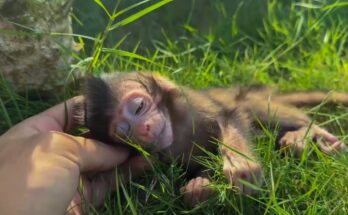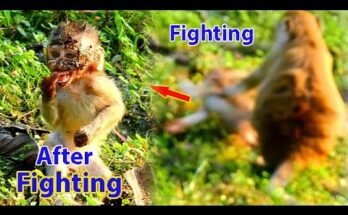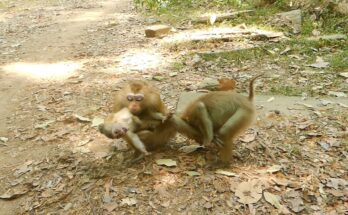The mother monkey shifted uneasily, her body tense and eyes darting as the small weight of her baby clung to her chest. At first it looked like a simple, desperate hug — the timeless grip of a newborn seeking warmth and safety — but as minutes stretched on the hold grew firmer, the tiny arms refusing to loosen. She tried to stand, to groom, to move to a sunlit branch, yet the baby tightened its grasp and buried its face into her fur, as if the world beyond her heartbeat were too frightening to face.
You can see the conflict in every careful motion: maternal instinct to soothe and provide, mixed with the physical discomfort of being held so tightly. The mother presses her hand to the infant’s back, coaxing and murmuring soft calls, but the baby answers only with whimpers and a stubborn cling. Other troop members watch from a respectful distance — some curious, some sympathetic — while the mother balances between patience and the need to free herself.
This scene captures a tender, raw moment of animal life: dependence, protection, and the limits of endurance. It’s a reminder that care isn’t always easy. The mother’s eyes, flicking between resolve and fatigue, tell a story of unconditional love confronting its own boundaries. Slowly, with gentle persistence, she coaxes the baby’s tiny fingers to relax — a soft nuzzle here, a patient pause there — and the grip loosens just enough for both to breathe.
By the end, the tension melts into quiet closeness. The baby, reassured, nestles against her warmth without the iron hold, and the mother resumes her watchful calm. It’s a fragile, intimate portrait of motherhood in the wild: messy, exhausting, and utterly devoted.


